The most beautiful mountains in the US are a contentious subject, for this is a land that brims with beauty. We scoured the states and whittled them down to a list of 20
Legendary climber Reinhold Messner said that there are three rules of mountaineering: “It’s always further than it looks. It’s always taller than it looks. And it’s always harder than it looks.”
Messner was the first person to climb all 14 eight-thousander mountains and has undoubtedly seen the ugly side of the world’s most beautiful mountains. Thankfully, those of us less alpine inclined can observe these peaks from afar. Most of us might content ourselves with the most beautiful mountains in the US instead. To help get you started, we’ve whittled our favourites to a list of 20.
Most beautiful mountains in the US
Our list of the most beautiful mountains in the US is unashamedly subjective. We haven’t used a matrix of metrics, scoring each on height, dominance, elegance or difficulty. Instead, we’ve chosen peaks that are striking in a particular way. It could be the extraordinary symmetry of Mount Shishaldin or the jagged spine of Dragontail Peak.
These mountains are all remarkable in a specific way and, we believe, deserve a place on this list. So, without further ado, here is our list of the most beautiful mountains in the US.
Baring Mountain
Height: 1,868m (6,127ft)
Location: Cascade Range, Washington
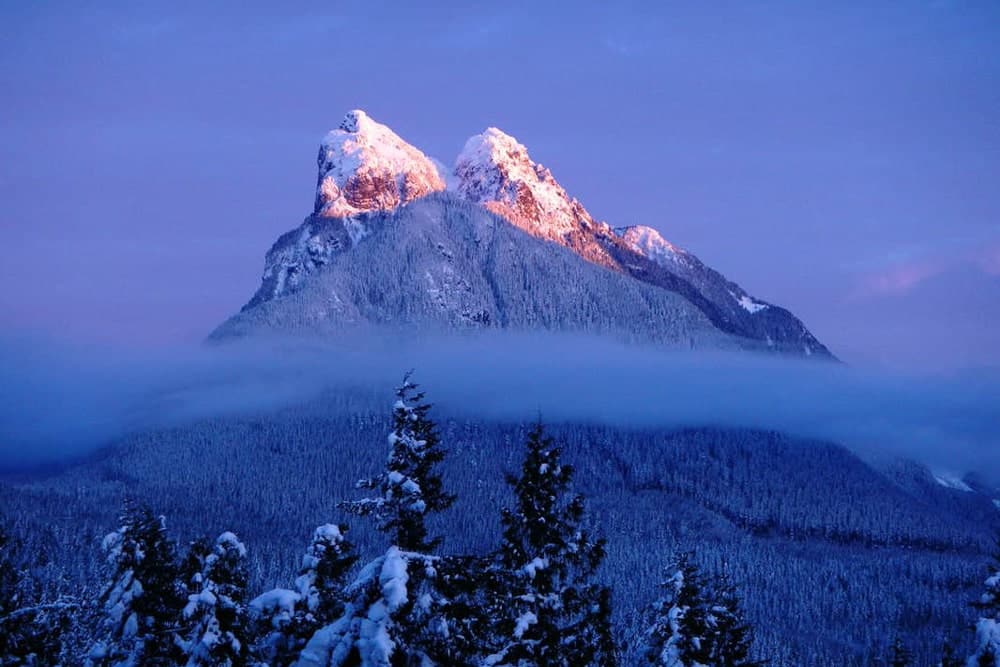
Baring Mountain is the third steepest peak in Washington, which is more impressive than it sounds given that the state is notorious for difficult climbs.
Baring’s double summit lends it a dramatic aspect and its sheer north face rivals some of the big walls in Yosemite. Efforts to scale the face spanned 10 years until climbers Don Gordon and Ed Cooper completed a successful ascent in July 1961. Today, it goes years without ascents because of poor rock quality and unpredictable weather.
Mount Shishaldin
Height: 2,857m (9,373 ft)
Location: Aleutian Islands, Alaska
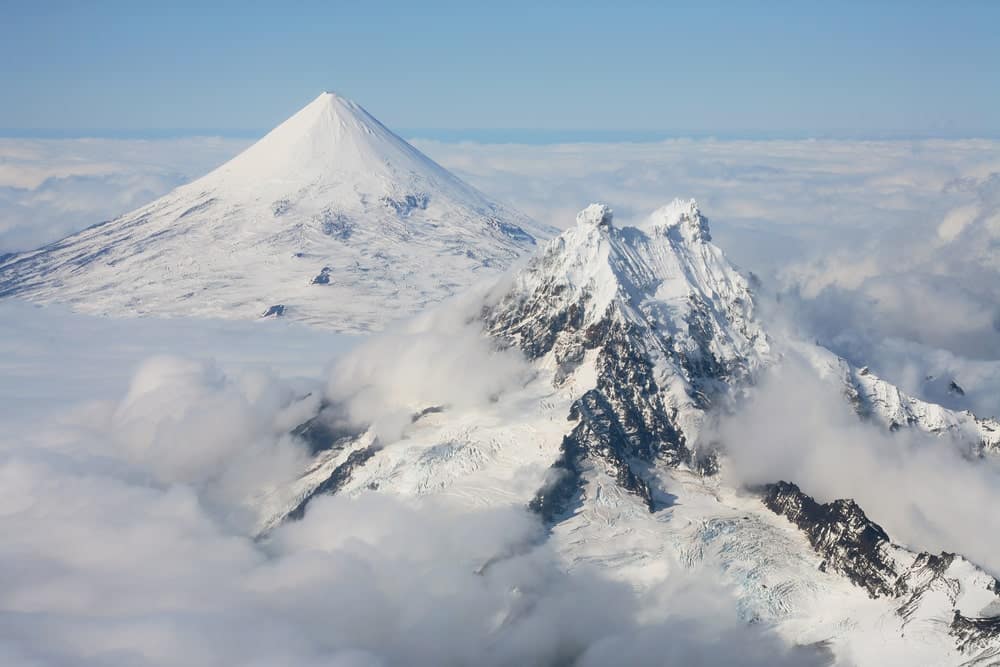
Mount Shishaldin is a moderately active volcano on Unimak Island in the Aleutian Islands of Alaska. Its contour lines form near-perfect circles above 1,980m (6,500ft), making it one of the most symmetrical mountains on Earth.
Shishaldin has long served as a landmark to mariners, although the area’s unpredictable weather often obscures the cone. The Aleut people named the peak Sisquk, which means ‘mountain which points the way when I am lost’. The name Shishaldin comes from the Russian version of the Aleut name.
El Capitan
Height: 3,018m (9,901ft)
Location: Sawtooth Range, Idaho
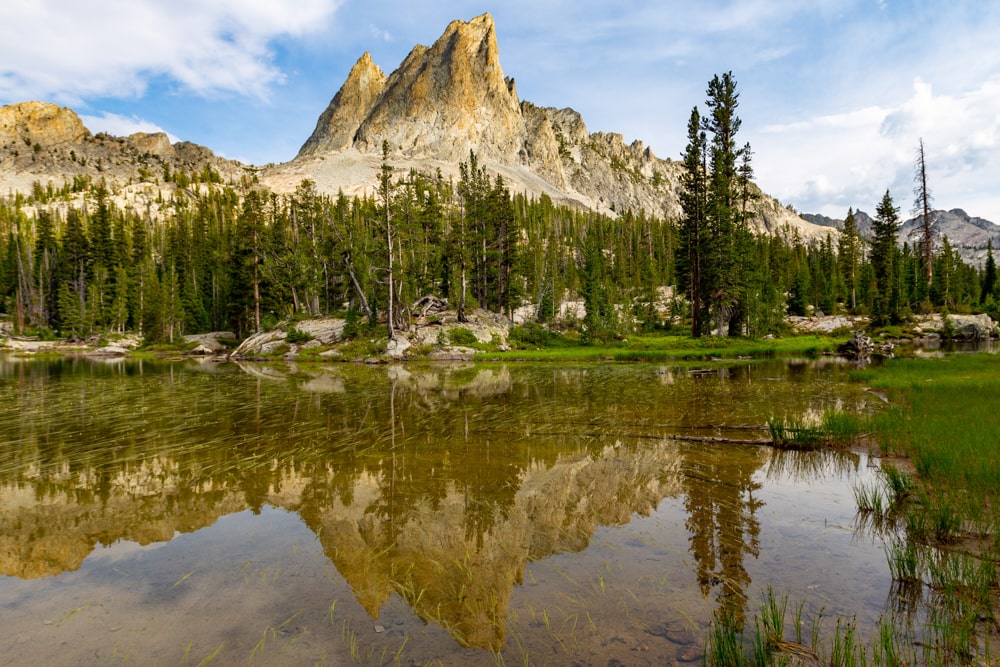
El Capitan in the Sawtooths may not be as famous as its namesake in Yosemite, but it is just as formidable. Located in the Sawtooth Wilderness – a federally-protected wilderness area – El Capitan was so named for the impressive dome-like face on its west wall.
The area is known for mountain goats, which can be seen on the higher slopes of the Sawtooths including El Capitan. In his book A Beast the Color of Winter, wildlife biologist Douglas H. Chadwick explains that, in the 1950s, Idaho was one of the first states to recognise that the goat population was dwindling. Hunting limits were put in place and the goat population largely stabilised unlike in other regions. It’s thought that there are around 2,500 mountain goats left in Idaho today.
Maroon Bells
Height: 4,317m (14,163ft) and 4,273m (14,019ft)
Location: Elk Mountains, Colorado
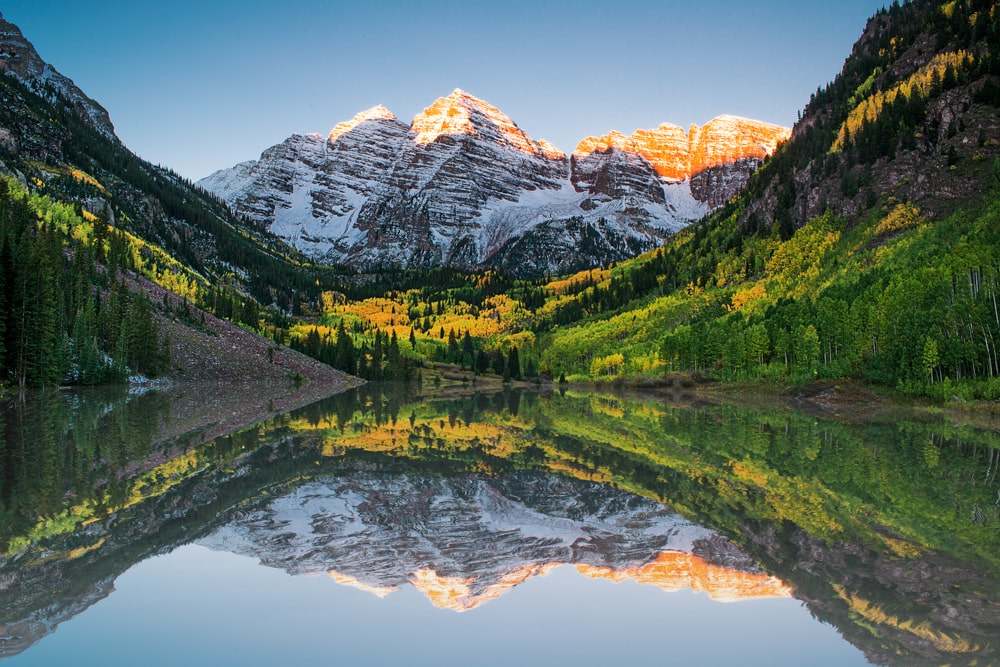
Comprising Maroon Peak and North Maroon Peak, the Maroon Bells are said to be the most photographed place in Colorado – quite a feat given that the state has more “fourteeners” than any other (i.e. peaks with at least 14,000ft of topographic elevation and 300ft of topographic prominence).
The Bells are both above 14,000ft but are too close together to be considered distinct fourteeners, so only Maroon Peak has the designation. In total, the US has 96 fourteeners, over half of which are in Colorado.
Denali
Height: 6,190m (20,308ft)
Location: Alaska Range, Alaska
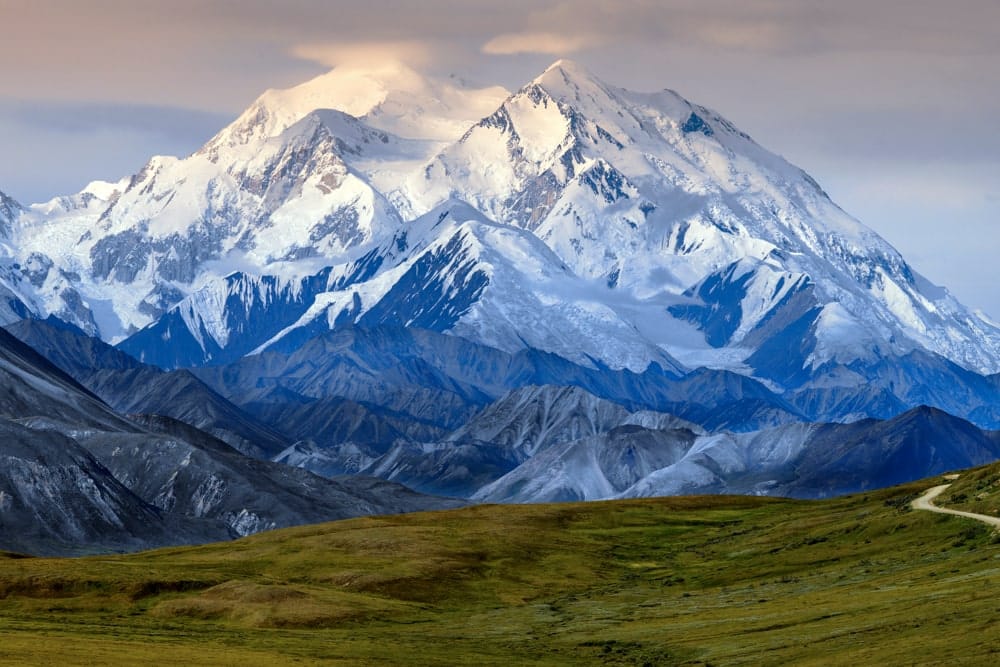
The tallest mountain in North America was long known as Mount McKinley, named so by a gold prospector in 1896 after he heard that William McKinley had been nominated for the US presidency. In 1917, the US government officially recognised Mount McKinley as the name of the mountain – despite McKinley never setting foot in Alaska!
The Koyukon people who inhabit the area have referred to the peak as ‘Denali’ for centuries. After the 1917 renaming, the Koyukon campaigned to reinstate the original native Alaskan name. Finally, in 2015, President Obama restored the name Denali, which translates as High One or Great One.
Mount Foraker
Height: 5,304m (17,400ft)
Location: Alaska Range, Alaska
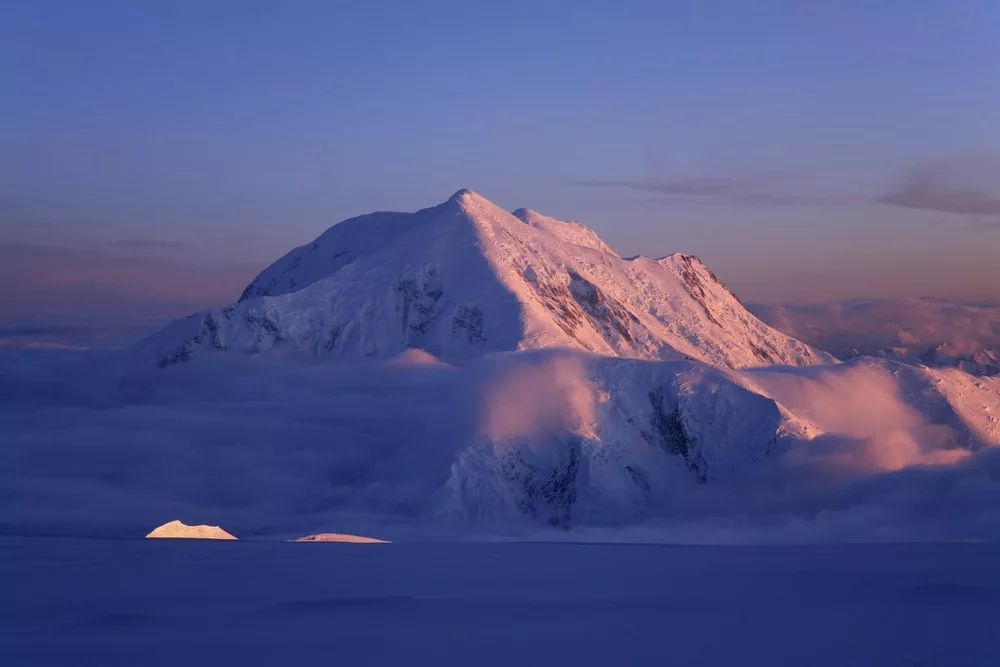
Another Alaskan giant, Mount Foraker is located just 23km (14mi) to the southwest of Denali. Known as ‘Denali’s wife’ or ‘Denali’s woman’ by its native names, Foraker is the second-highest peak in the Alaska Range and the third-highest in the US.
Like Denali, Foraker suffers from notoriously stormy and unpredictable weather, which is hardly surprising considering that the mountain is located at 63° North – just 3° degrees south of the Arctic Circle. Foraker only sees around 10 to 15 climbing attempts every year while Denali sees over 1,000. Foraker’s ‘husband’ is clearly too much of a lure for prospective summiteers.
Mount Hunter
Height: 4,442m (14,573ft)
Location: Alaska Range, Alaska
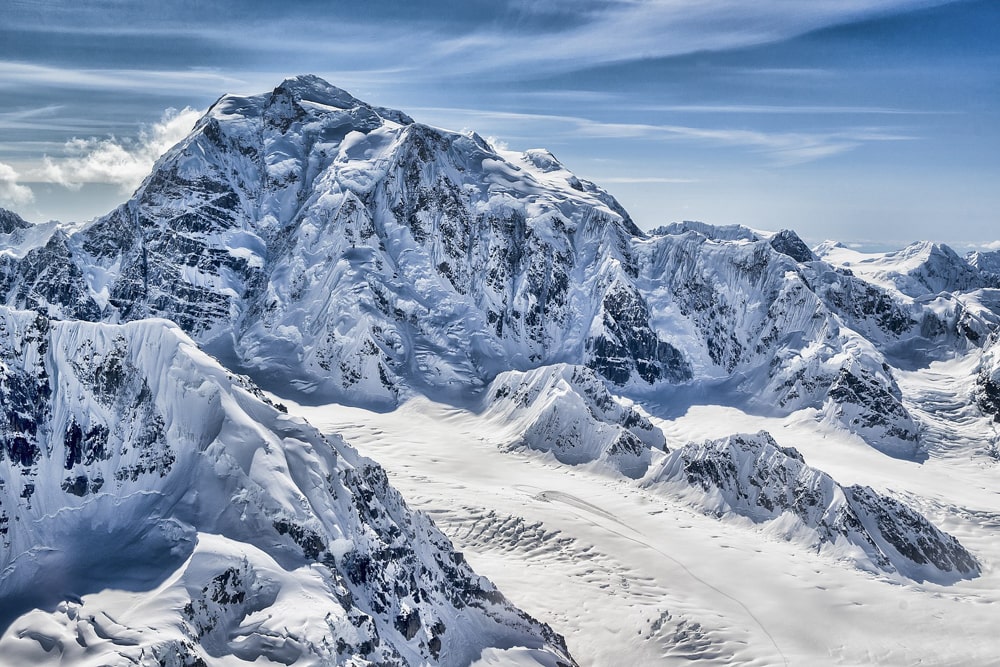
If Foraker is Denali’s wife, then Hunter is its child. The third-highest major peak of the Alaska Range, Hunter is called Begguya in the Dena’ina language, which translates as ‘Denali’s child’.
Even though the youngster of the family is 1,748m (5,730ft) lower than Denali and 862m (2,828ft) lower than Foraker, Hunter is considered the hardest to climb of the three mountains due to its steeper, more sustained routes and precipitous corniced ridges. Unsurprisingly, Hunter, like Denali and Foraker, is characterised by extremely cold and unpredictable weather.
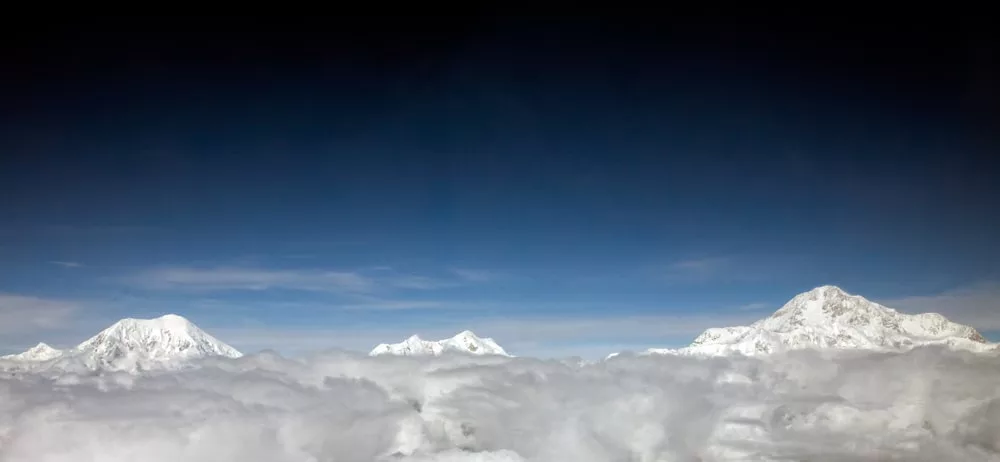
Mount Sneffels
Height: 4,315m (14,150ft)
Location: Rocky Mountains, Colorado
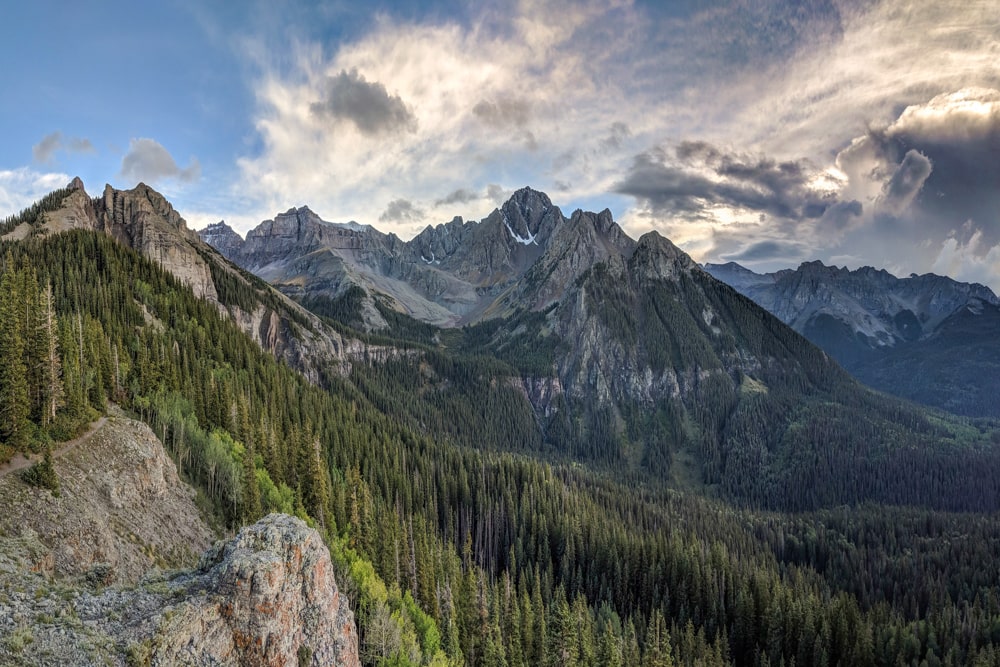
One of the most photographed mountains in Colorado, Mount Sneffels is widely considered the most beautiful of the state’s fourteeners (i.e. mountains above 14,000ft).
The handsome peak, which is popular with tourists, hikers and mountaineers alike, is named after the Icelandic volcano Snæfell made famous by Jules Verne’s novel Journey to the Centre of the Earth. From the western side of the mountain, Sneffels can look like a volcanic crater similar in appearance to Snæfell located some 6,000km (3,728mi) away in the North Atlantic.
Mount Shasta
Height: 4,322m (14,179ft)
Location: Cascade Range, California
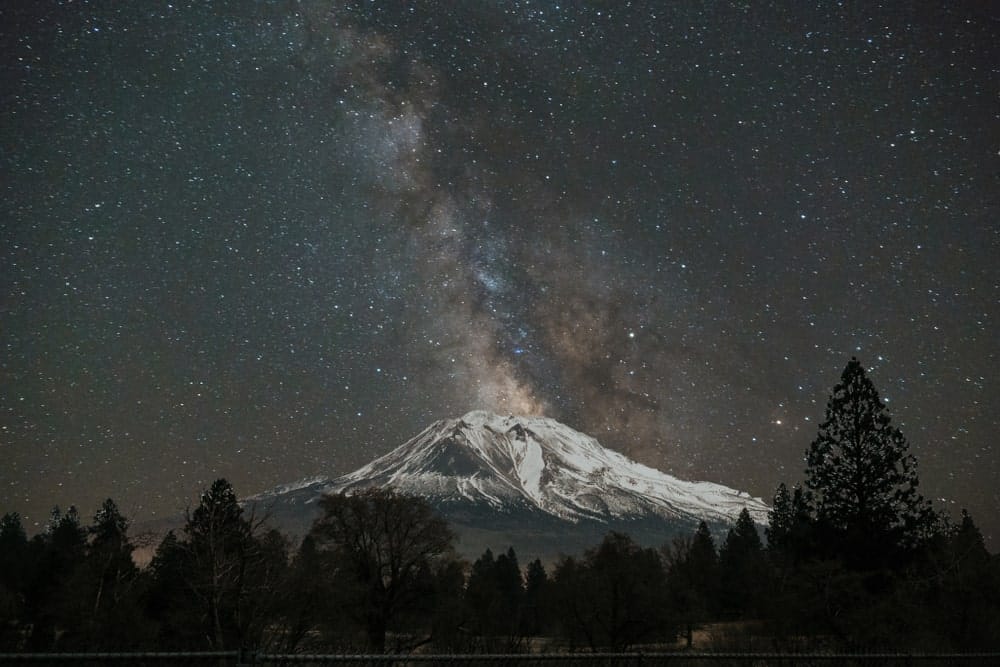
When John Muir, the famed ‘father of the national parks’, first set sight on Mount Shasta, his “blood turned to wine”. Clearly one of the most beautiful mountains in the US, Shasta comprises four overlapping dormant volcanic cones, giving it a layered shape.
Muir can be forgiven for his hyperbole for Mount Shasta is a hotbed of myth and mystery. Legend has it that somewhere deep in the mountain lies the hidden city of Telos, home to an ancient civilisation of ‘Lemurians’ from the mythical lost continent of Lemuria. Native Americans have their own legends while, in recent times, UFO sighting and other eerie happenings have been reported around the mountain.
Mount Saint Elias
Height: 5,489m, (18,008ft)
Location: Saint Elias Mountains, Alaska
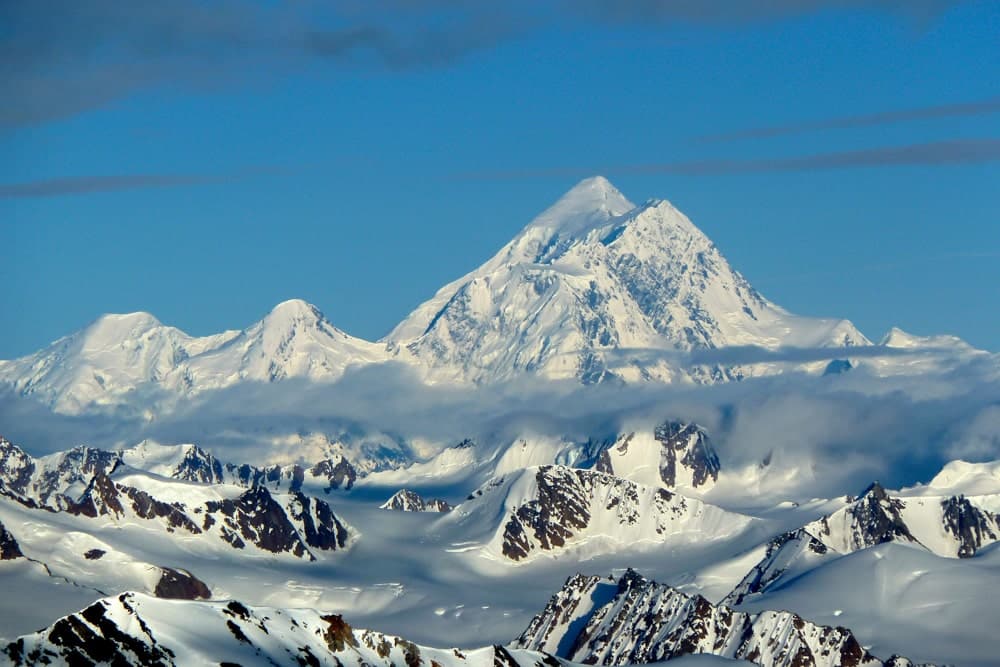
Mount Saint Elias straddles the border of Alaska and the Canadian territory of Yukon. It is America’s second-highest peak after Denali, as well as Canada’s after Logan.
When European explorers first sighted the mountain during the mid-18th century, they initially failed to give it a name before it was eventually named after Cape Saint Elias in Alaska. The peak was briefly – and rather unimaginatively – designated Boundary Peak 186 by the US Geological Survey.
In recent years, the colossal peak has gained the moniker ‘the Man Eater’ after a number of failed attempts to ski or snowboard from its summit led to tragic results. The feat, believed to be the planet’s longest skiing descent, was eventually achieved in 2007 when an Austro-American team completed a daunting 3,960m (13,000ft) ski descent from the summit.
Mount Susitna
Height: 1,340m (4,396ft)
Location: Alaska Range, Alaska
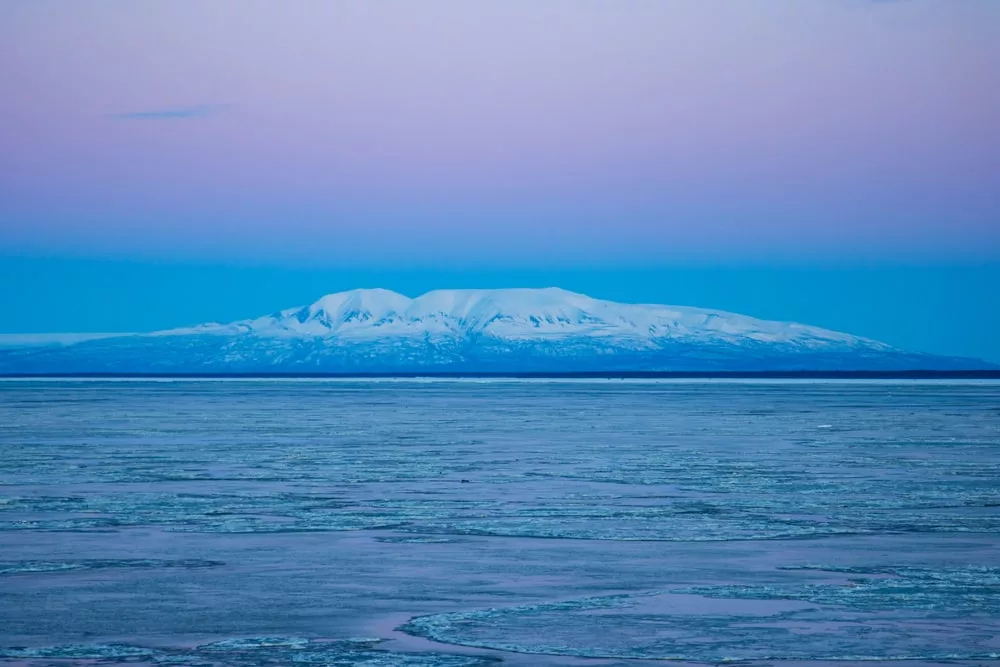
Compared with many of its neighbours, Mount Susitna is puny in size and, as such, has a fitting native name. The peak is known as Dghelishla in the Dena’ina language, translating as Little Mountain.
The smooth-sided peak, shaped by millennia of glaciation, is also called Sleeping Lady for its resemblance to a recumbent woman when seen from a certain angle. In 2020, the little-known Alaskan peak shot to global fame when a digitally-altered image went viral and was mislabeled as drone footage of Mount Susitna. In fact, the image was a work of art titled ‘Winter Sleep’ by French artist Jean-Michel Bihorel who makes three-dimensional digital creations.
Mount Shuksan
Height: 2,783m (9,131ft)
Location: Cascade Range, Washington
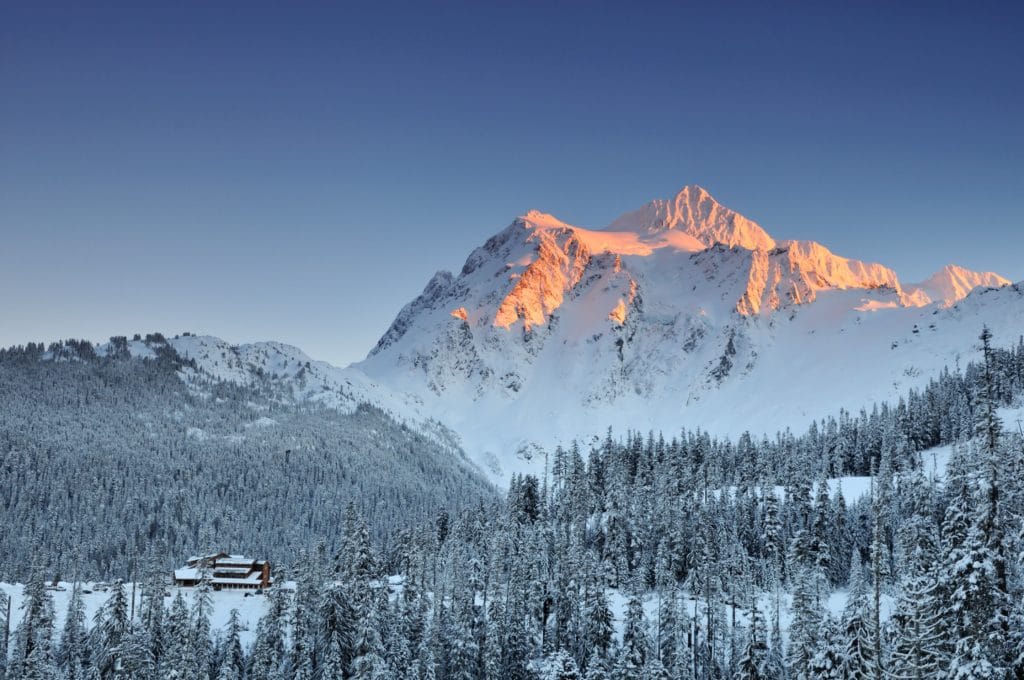
Mount Shuksan, meaning ‘high foot’ or ‘golden eagle’ in Nooksack, is a sprawling massif of pinnacles, ridges and glaciers, essentially amounting to its own Cascadian sub-range. The highest and most striking point on the grand alpine mountain is a three-faced peak known as Summit Pyramid.
One of the most photographed mountains in Washington, Shuksan is perhaps at its most picturesque when its north face is viewed from the appropriately named Artist Point Trail or from across Picture Lake. Shuksan is also notable as one of the few non-volcanic peaks in the Cascade Range and the only one whose summit surpasses the treeline by 914m (3,000ft) or more.
Mount Rainier
Height: 4,394m (14,417ft)
Location: Cascade Range, Washington State
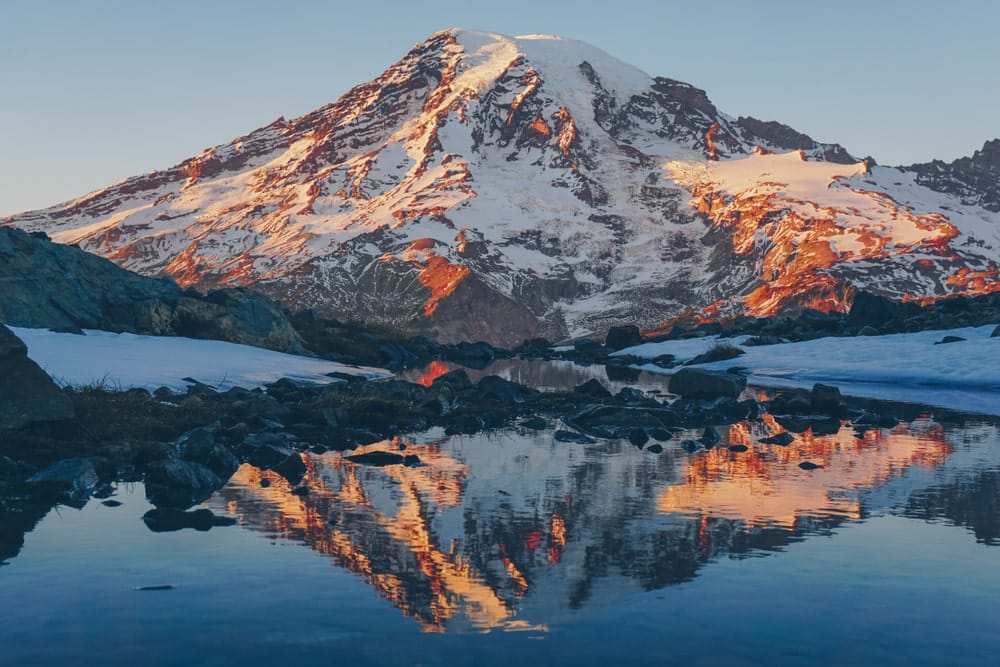
Mount Rainier is the highest peak in Washington State as well as the Cascade Range. It is the most glaciated peak in the contiguous US and spawns five major rivers from its icy slopes. The mountain is frequently used as training for Denali as it shares many of the characteristics and challenges found on the continent’s highest peak.
Even though there hasn’t been a significant eruption for around 200 years, Mount Rainier is an active stratovolcano and is considered one of the world’s most dangerous volcanoes due to its high probability of eruption in the near future. In fact, the International Association of Volcanology and Chemistry of the Earth’s Interior has identified Mount Rainier as one of the ‘Decade Volcanoes’; 16 volcanoes on Earth recognised as posing a significant risk to nearby populations.
Mauna Kea
Height: 4,207m (13,803ft)
Location: Hawaiian Islands, Hawaii
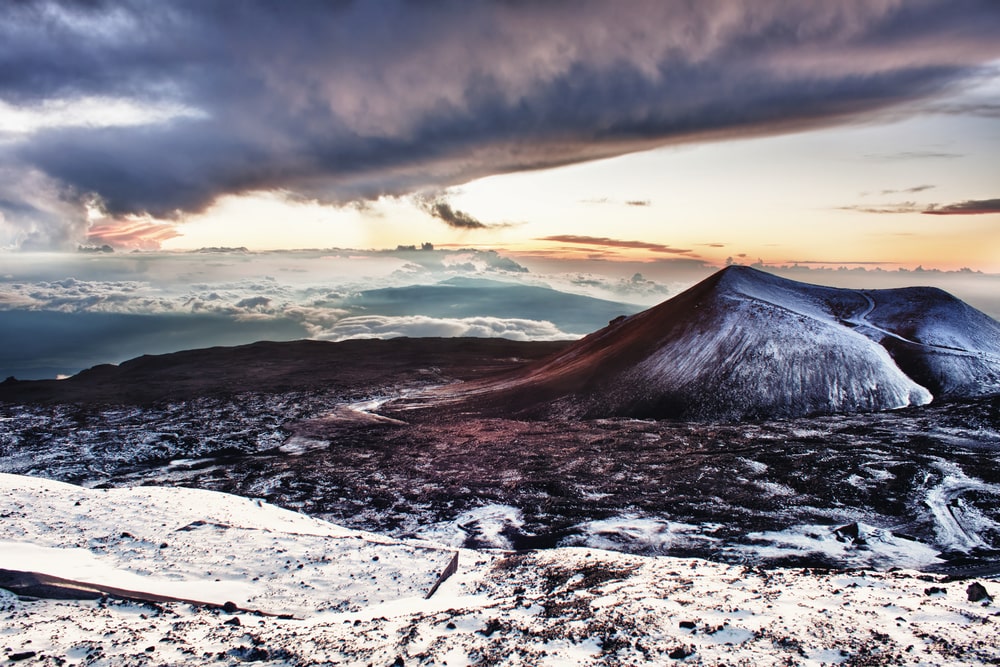
While we all know that Mount Everest is Earth’s highest mountain, Mauna Kea takes the crown as the world’s tallest. The majority of the mountain actually lies hidden beneath the ocean surface, so when measured from its underwater base to its peak, Mauna Kea is an astounding 10,203m (33,476ft) in height.
Mauna Kea is also the planet’s second-highest island peak, only topped by Puncak Jaya in Indonesia, the highest peak in Oceania and a member of the seven summits.
Mauna Kea’s combination of high altitude, dry environment and stable airflow makes it one of the best sites in the world for astronomical observations. As such, there are no fewer than 13 telescopes mounted on its summit plateau, the world’s largest astronomical observatory with telescopes operated by astronomers from 11 countries.
Lone Eagle Peak
Height: 3,641m (11,946ft)
Location: Rocky Mountains, Colorado
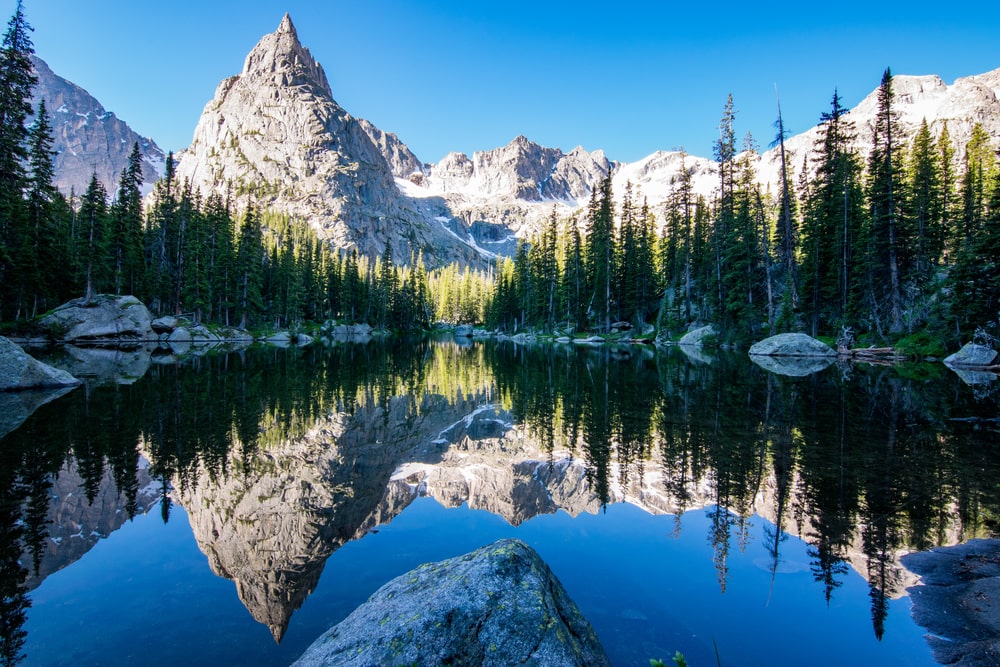
In the summer of 1923, years before he became a household name, Charles Lindbergh came to Colorado to claim a $1,000 prize offered to the first pilot who could land a plane on the Saint Vrain Glacier.
Promoter Fred Fair took one look at Lindbergh’s “suicide crate” of a plane and immediately turned him down. “We were afraid that a fatal crackup would be publicity of the wrong kind,” he told a reporter.
Four years later, Lindbergh, who was known as the “Lone Eagle”, completed the first solo nonstop transatlantic flight in history and became a household name. In his honour, Fair christened an unnamed 3,641m pinnacle near Saint Vrain Glacier as Lindbergh Peak. After the US Board on Geographic Names ruled against naming it after a living person, the mountain officially became Lone Eagle Peak.
Grand Teton
Height: 4,199m (13,775ft)
Location: Teton Range, Wyoming
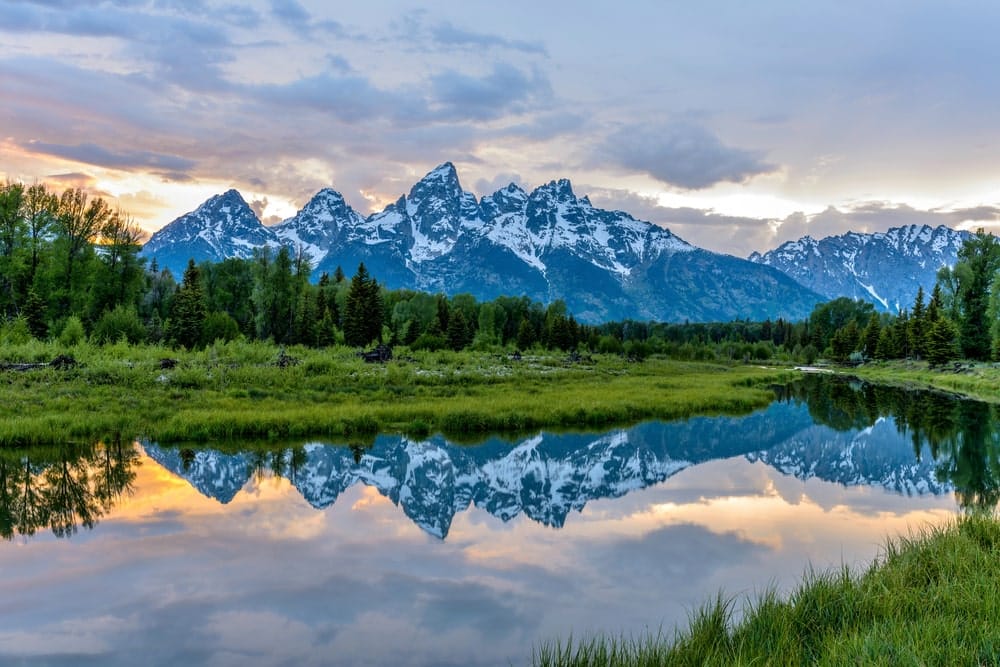
The Tetons extend 40 miles across northwestern Wyoming and constitute one of the youngest ranges in North America. These mountains have been uplifting for less than 10 million years and are classified as ‘adolescent’ compared with the ‘middle-aged’ Rockies (50-80 million years old) and the ‘elderly’ Appalachians (more than 300 million years old).
Grand Teton is the highest point and rises more than 2,130m (6,988ft) above Jackson Hole, a verdant valley and popular ski resort at its eastern base.
As with many illustrious peaks, Grand Teton comes with its own first ascent controversy. Explorers Nathaniel P. Langford and James Stevenson claimed to have reached the summit in July 1872 but it’s believed that they only reached The Enclosure, a side peak of Grand Teton. The first undisputed summit was in 1898 by surveyor William Owen and three companions.
Dragontail Peak
Height: 2,690m (8,840ft)
Location: Stuart Range, Washington
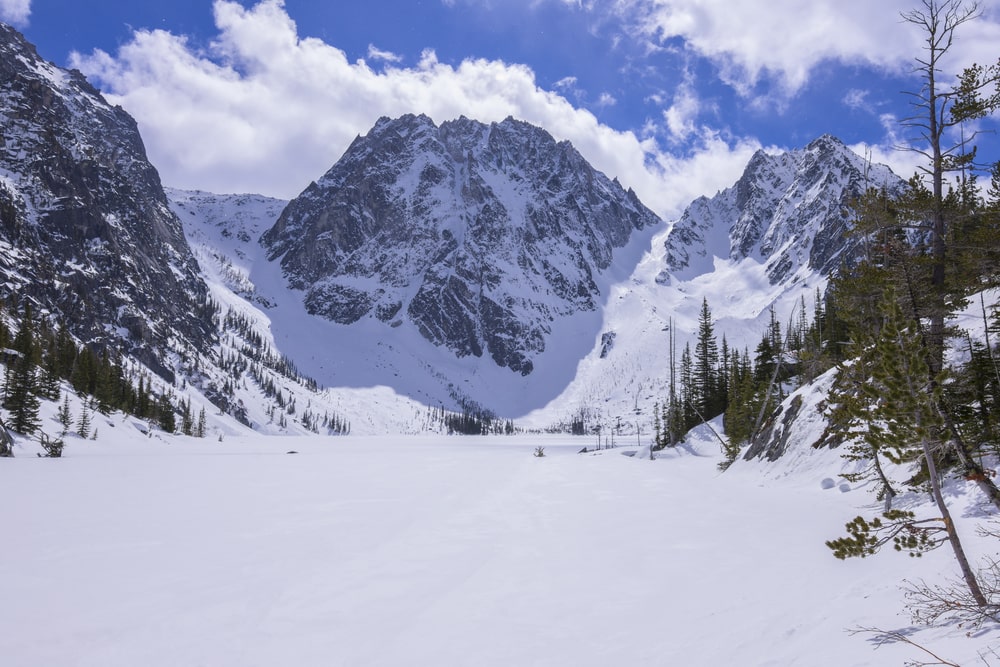
Dragontail is the highest peak in The Enchantments, a famed backcountry region in Washington State. The hulking mountain was given its name in 1955 after climbers on an adjacent peak remarked that its rock formations resembled a “dragon’s tail”.
It should be said that any number of peaks in the region could be named one of the most beautiful mountains in the US, not least Prusik Peak and Little Annapurna nearby.
Devils Tower
Height: 1,558m (5,112ft)
Location: Bear Lodge Mountains, Wyoming
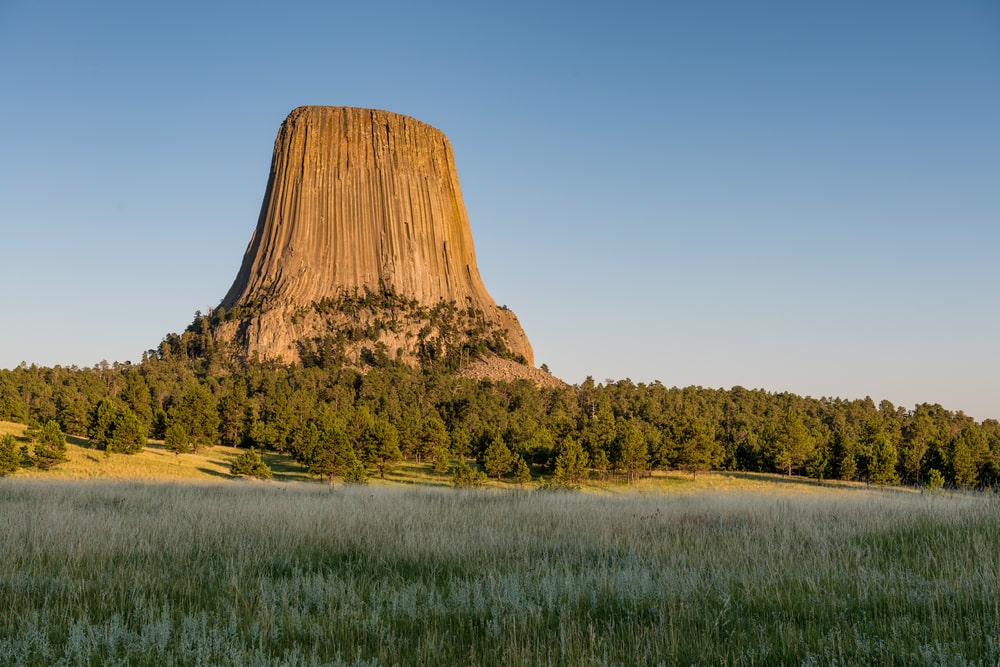
Soaring in splendid isolation above the prairie surrounding the Black Hills, the Devils Tower National Monument is a remarkable sight. The near-vertical monolith (technically, it’s actually a laccolith) is known as Bears Lodge by several Native American tribes, including the Arapahoe, Cheyenne and Lakota, who consider it sacred.
The monument looks as if it’s scored with hundreds of parallel cracks but is actually composed of huge hexagonal columns. As such, the peak is considered one of the best crack-climbing locations in North America with enthusiasts flocking here from all over the world.
Mount Whitney
Height: 4,421m (14,505ft)
Location: Sierra Nevada, California
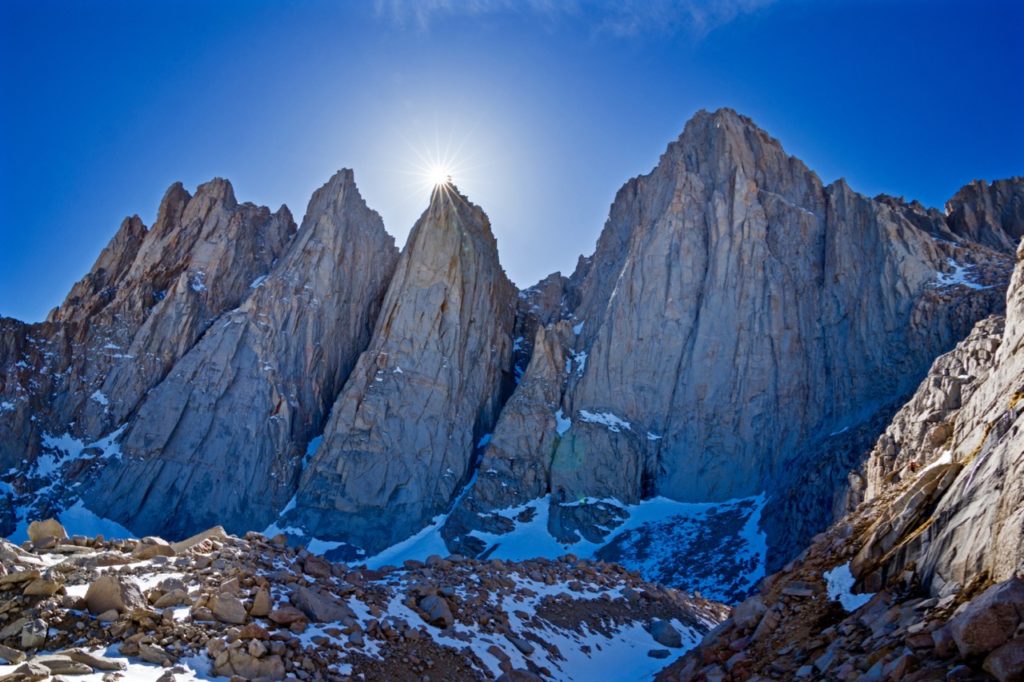
Mount Whitney is the highest summit in the contiguous USA (i.e. excluding Hawaii and Alaska). While its serrated ridges may look intimidating at first sight, it’s a relatively straightforward ascent and can be achieved by those with limited mountaineering experience.
The popular Mount Whitney Trail starts at an elevation of 2,550m (8,360ft), meaning that the summit can be reached in just a day. However, most hikers prefer to take at least two days to complete the 35km round trip with an elevation gain of just over 1,900m (6,100ft).
Half Dome
Height: 2,694m (8,838ft)
Location: Sierra Nevada, California
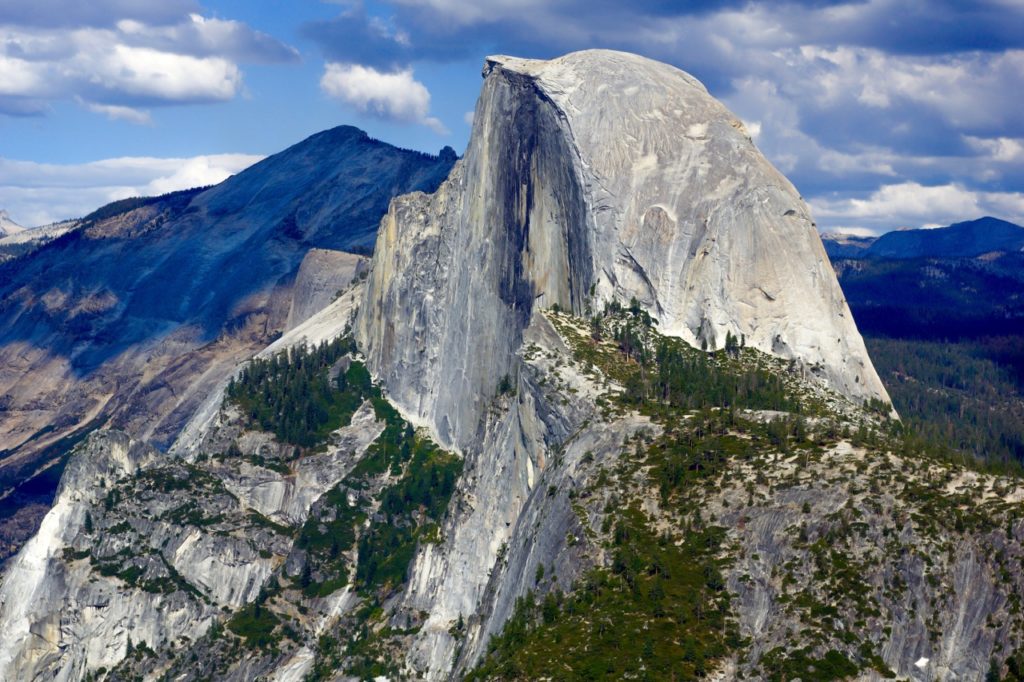
There is some debate about whether Half Dome in Yosemite National Park is technically a mountain. Indeed, it looks like a mountain sawn in half – so sheer is its Northwest Face.
The first technical ascent of the face was completed in 1957 via a route known today as the Regular Northwest Face. It took five days and was the first Grade VI climb in the US. Today, the route has been free-soloed in a mere few hours. The fastest ascent was completed in 1hr 22m by Alex Honnold in May 2012, as documented in the heart-stopping film Free Solo.
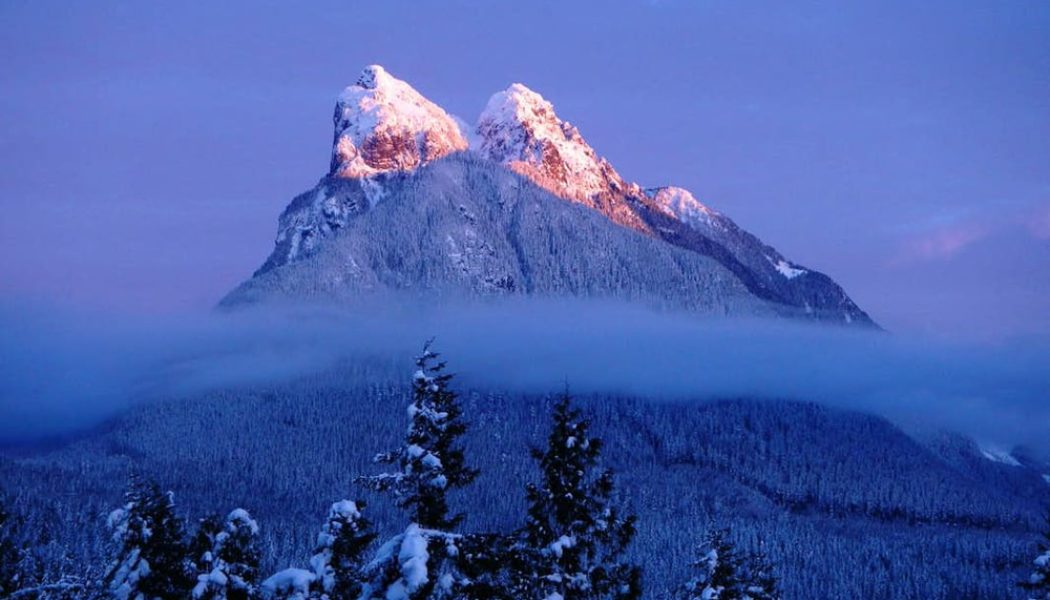
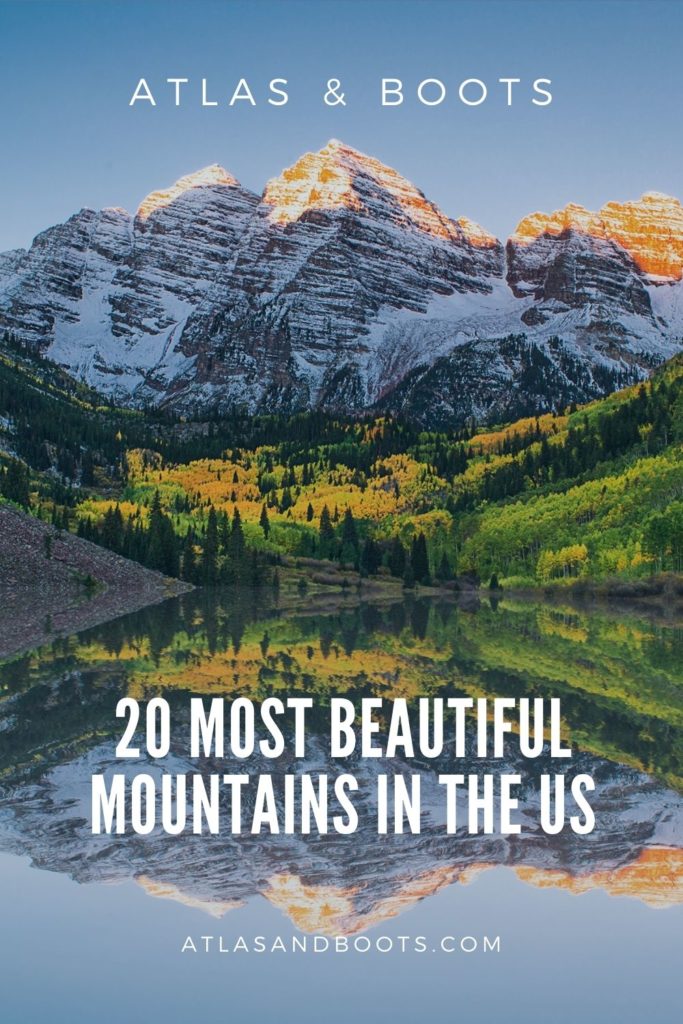

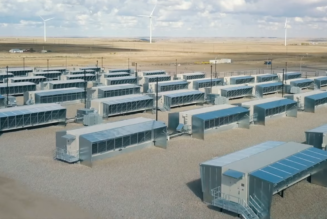




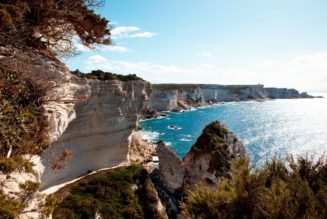

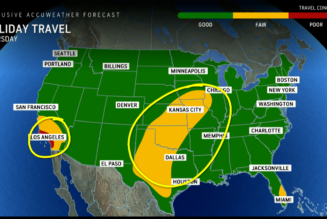
Tagged: hiking & trekking, mountains, nature, North America, travel blog, Uncategorised, USA